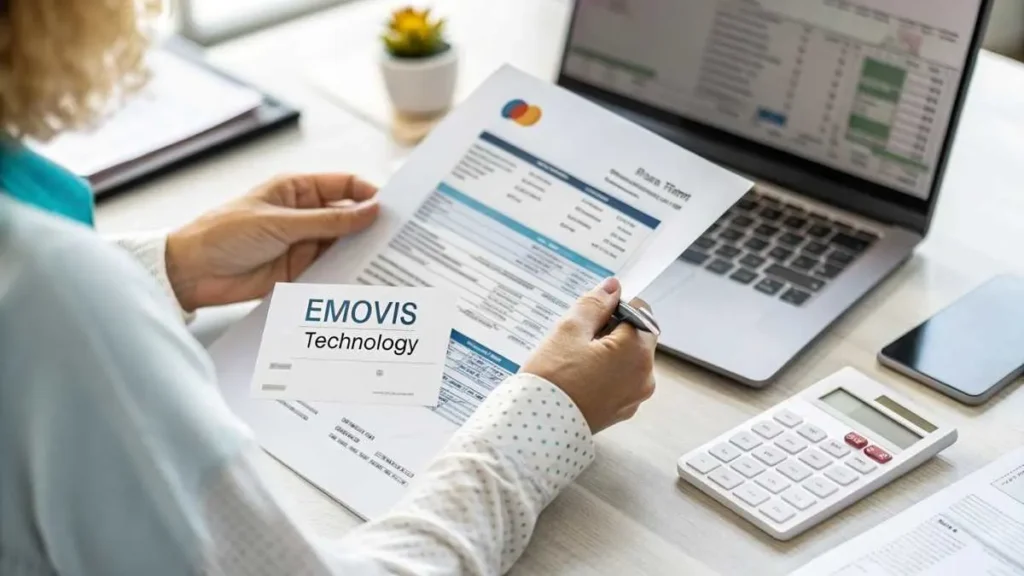
Spotting an “Emovis Technology” charge on your credit card statement can be confusing—especially if you don’t immediately recall making such a payment. For many U.S. drivers, this type of billing descriptor is tied to toll payments or electronic tolling systems. However, when charges appear unexpectedly, it’s important to verify their legitimacy and know your rights if the transaction is unauthorized.
This guide breaks down what an Emovis Technology charge means, why it may show up, and the steps you should take to resolve or dispute it.
What Is Emovis Technology?
Emovis Technology is a global company that provides tolling and electronic road payment solutions. In the United States, the company partners with certain highway authorities, express lanes, and tolling agencies to process payments.
When you drive on a toll road or use an express lane that relies on Emovis’s systems, the payment may appear on your credit card statement as:
- “Emovis Technology”
- “Emovis Tech Toll Payment”
- “Emovis Road Payment”
Important: Limited public information is available on specific U.S. tolling programs that use Emovis Technology. If you’re unsure about a charge, it’s best to confirm with your local toll authority or bank.
Why an Emovis Technology Charge Might Appear
There are several reasons you might see this billing descriptor on your credit card:
1. Legitimate Toll Road Payment
- You recently drove on a toll road, express lane, or managed lane where Emovis handles payment processing.
- The charge may not appear immediately; some toll systems post payments days or even weeks later.
2. Linked Transponder or Account
- If you have a toll transponder (such as E-ZPass or SunPass) linked to your credit card, Emovis may process the payment.
- A family member or someone sharing your vehicle may have triggered the charge.
3. Duplicate or Misapplied Charge
- Occasionally, billing systems may apply a toll payment twice or incorrectly assign it to your card.
- Reviewing your toll travel records can help confirm if the charge was valid.
4. Unauthorized or Fraudulent Transaction
- If you haven’t used any toll roads and the charge is unrecognizable, your credit card information may have been compromised.
- Fraudsters sometimes use legitimate billing descriptors like “Emovis Technology” to mask unauthorized charges.
How to Verify an Emovis Technology Charge
Before assuming fraud, take these steps to confirm whether the charge is legitimate:
- Review Recent Travel
- Check if you or a family member recently used a toll road, bridge, or express lane.
- Look at the date and amount of the charge to match it with your trip.
- Check Your Toll Account
- Log into your toll transponder account (E-ZPass, SunPass, TxTag, etc.).
- See if Emovis is listed as a billing partner for your area.
- Ask Household Members
- A spouse, child, or roommate who uses your card for toll payments may have triggered the charge.
- Contact Emovis or Your Toll Authority
- Reach out directly to confirm the charge and request a detailed record.
- Your toll authority’s website usually lists contact information.
- Call Your Credit Card Issuer
- If you can’t verify the charge, contact your credit card provider immediately.
What to Do If the Charge Is Unauthorized
If, after verifying, the charge is still unexplained:
Step 1: Contact Your Bank or Card Issuer
- Report the transaction as unauthorized.
- Your bank may freeze your card to prevent further fraudulent charges.
Step 2: Dispute the Charge Under the Fair Credit Billing Act (FCBA)
- U.S. consumers are protected under the Fair Credit Billing Act, which allows you to dispute billing errors, including fraudulent charges.
- Typically, you must file a dispute within 60 days of the statement date.
Step 3: Request a Chargeback
- Your card issuer may reverse the transaction through a chargeback process if fraud is confirmed.
Step 4: Monitor for Further Fraud
- Check your statements regularly.
- Set up transaction alerts via your banking app to spot suspicious charges quickly.
Tips to Avoid Future Toll Charge Confusion
- Keep Toll Records: Save receipts or screenshots of online toll payments.
- Use One Payment Method: Link only one card to your toll transponder account to reduce confusion.
- Set Alerts: Enable text or email alerts for toll account activity.
- Monitor Statements: Review your credit card activity weekly to catch errors early.
Your Consumer Rights Under U.S. Law
The Fair Credit Billing Act (FCBA) protects U.S. consumers from unauthorized credit card charges. Key protections include:
- $0 liability for fraudulent charges if reported promptly.
- The right to withhold payment for disputed charges during investigation.
- A 60-day window from your statement date to dispute.
- The right to request written verification of the transaction.
Read Also- Credit Card Debt in Divorce Florida
Frequently Asked Questions (FAQs)
What is Emovis Technology?
Emovis Technology is a company that provides electronic toll collection and road payment systems for highways and express lanes worldwide, including some in the U.S.
Is an Emovis Technology charge legit?
Yes, it can be legitimate if tied to a toll road payment or transponder account. However, if you haven’t used toll roads, it may be fraudulent.
Which toll roads in the U.S. use Emovis Technology?
Specific partnerships vary by state and toll authority. Since public information is limited, consumers should confirm directly with their local toll operator.
How do I dispute an Emovis Technology charge?
Start by verifying with your toll authority. If the charge is unauthorized, contact your credit card issuer and file a dispute under the Fair Credit Billing Act.
What if the charge is fraud?
If it’s fraud, your bank will typically reverse the charge, issue a new card, and help you monitor for additional unauthorized activity.
How can I prevent toll billing surprises?
Keep records of toll trips, ensure only one card is linked to your transponder, and regularly check your statements.
Final Thoughts
Seeing an Emovis Technology charge on your credit card statement doesn’t always mean something is wrong—it could simply be a toll payment processed under a less familiar billing name. Still, it’s essential to verify every charge to avoid overpaying or falling victim to fraud.
By understanding what Emovis is, checking your toll activity, and knowing your consumer rights under the Fair Credit Billing Act, you can take quick, confident steps to resolve the issue and protect your finances.

Emma Rose is a U.S.-based personal finance writer and a regular contributor at Cardix.us. She focuses on topics like credit cards, credit scores, and everyday money management. Emma’s writing makes complex financial concepts simple and practical, helping readers make smarter credit and spending decisions with confidence.


